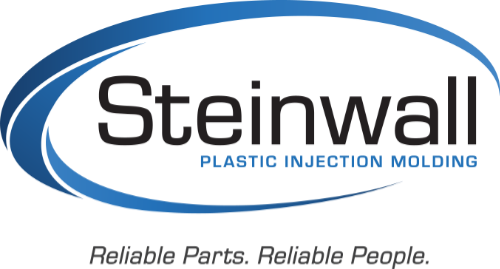Jan H. Schut, Plastics Engineering
It could be the most unusual new development in injection molding in the past 20 years, developed by household products giant Procter & Gamble Co., Cincinnati, OH (us.pg.com). According to P&G patents, the technology consists of retrofittable controls and software for aluminum injection molds with pressure sensors and special cooling, which P&G claims increase productivity more than 50% on existing injection molding machines. P&G set up a subsidiary, Imflux Inc. (imflux.com), in May 2013 in Hamilton, OH, to develop and build the retrofits and aluminum molds and requires packaging suppliers to use them if they want to mold for P&G.
Productivity gains are in material savings, not faster cycle time. Imflux U.S. Pat. Applic. # 20160096303 says its proprietary control software and in-mold sensors “deliver a 20-25% average throughput benefit” on existing presses and tools. Using aluminum molds increases throughput another 20-25% because of aluminum’s high thermal conductivity. Imflux patents describe molds made of aluminum alloys like QC-10 from Arconic Inc., formerly part of Alcoa (www.arconic.com), which are 4.5 times more thermally conductive than tool steel (92.2 BTU/ft/hr/ft sq/F for QC-10 vs. 20.2 for P20 tool steel).
Cycle time for Imflux llow-pressure molding is reportedly roughly the same as for hhigh-pressure injection molding, but divided very differently. Where conventional high-pressure injection molding spends about 10% of cycle time filling, 50% packing, and 40% cooling, Imflux technology spends 90% of cycle time filling, only 10% cooling (U.S. Pat. # 882829), and little or no time on pack and hold. P&G touted the Imflux technology loudly four years ago when it was introduced, but has said next to nothing about it since it went commercial.
Imflux says its low constant pressure injection molding with aluminum molds
increases throughput by more than 50% on the same size or smaller press
uses 25% less resin than conventional molding because of thinner walls
reduces cold runner volume by 50% (and doesn’t need hot runners)
can mold non-traditional part designs, not previously thought possible
can substitute lower cost materials in the same mold with better surface quality
uses melt temperatures below resin spec for new co-injection possibilities
THE IMFLUX BACK STORY
Imflux came out of an unusual 10-year period of outside collaboration and growth at P&G under high-profile CEO Alan George “A.G.” Lafley, from 2000 to 2010. Lafley, who has a Harvard M.B.A., brought Harvard-trained innovation consultants into P&G, proclaimed P&G “an innovation factory,” offered “innovation college” courses, and set up a FutureWorks division to incubate new technology. Imflux president and CEO, Nathan Estruth, and V.P. of Customer Operations, Jared Kline, both came out of P&G’s FutureWorks division.
P&G claims Imflux invented its low, constant pressure molding technology, but that’s not strictly true. It’s based on technology invented in the 1990s by Milko Guergov, president and founder of Intellim
old/MGV Enterprises Inc., Ann Arbor, MI, and acquired by P&G around 2010. By 2012 P&G had registered the Intellimold trademark and process in Imflux’s name, but never marketed it as Intellimold. After P&G acquired Intellimold’s intellectual property, Guergov consulted with P&G to adapt his process to thin-wall packaging. Guergov’s name, spelled “Gergov” by P&G, is on several Imflux patents (U.S. Pat. # 8980146 and # 9481119) along with P&G inventors.
Guergov had previously sold his Intellimold patents and process in 2000 to Textron Automotive Co., which Guergov says used it commercially to injection mold parts ranging in size from small components to whole bumper fascia. The patents traveled a lot after that. Guergov’s U.S. Pat. # 6019918, for example, on “Gas-assisted injection molding with controlled internal melt pressure” was assigned in February 2000 to Guergov, then in May 2000 to Textron, then back to Guergov’s M&C Advanced Processes Inc. in December 2001 before Textron’s automotive trim division was acquired by Collins & Aikman Corp. in January 2002.
Imflux also offers retrofits to outside customers in non-competing areas like medical and automotive and gives seminars in Hamilton on the technology – all under non-disclosure agreements. No outside users have been announced. P&G senior manager of global company communications, Jeff LeRoy, says Imflux customers are confidential and that which P&G brands use Imflux technology is considered proprietary.
